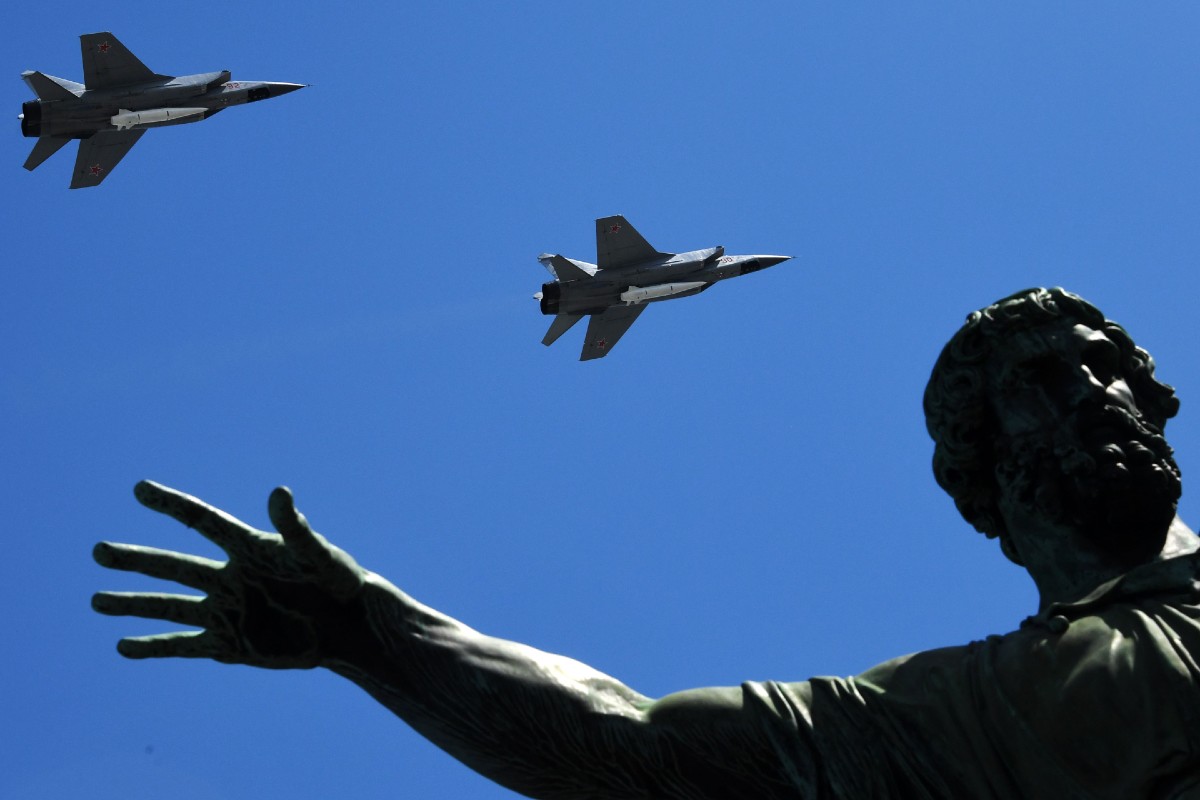Russia's "Kinzhal" missile performance "poor" as jets patrol Black Sea: UK
The "next generation" Kinzhal missiles are also known by their NATO reporting name, "Killjoy." Russia's hypersonic Kinzhal missile, or "Dagger," has failed to impress during Moscow's war in Ukraine, according to the British Defense Ministry. This comes after the Kremlin announced new Black Sea patrols with jets carrying the "next generation" weapon. The Kinz Hal, which has a range of up to 1,240 miles and can travel at up to 10 times the speed of sound, is currently in operational testing in Ukraine. On Wednesday, Russian President Vladimir Putin announced that Russia would begin patrols over the Black Sea "on a permanent basis" using modified MiG-31 fighter jets carrying Moscow's "Kinzhal" missile. However, Western experts argue that Moscow's labeling of the KinZhal as hypersonIC is misleading and that it may not be as invulnerable to air defenses as Russia has claimed.

Veröffentlicht : vor 2 Jahren durch Ellie Cook in Science
Russia's hypersonic Kinzhal missile has failed to impress throughout Moscow's war in Ukraine, the British Defense Ministry said on Saturday, shortly after the Kremlin announced new Black Sea patrols with jets carrying the "next generation" weapon.
The Kinzhal "effectively remains in operational testing, with its performance in Ukraine to date being poor," the U.K. government said in a statement posted to X, formerly Twitter.
On Wednesday, Russian President Vladimir Putin said that Russia would begin patrols in neutral airspace over the Black Sea "on a permanent basis," using modified MiG-31 fighter jets carrying Moscow's long-range, air-launched "Kinzhal" missile.
The Kremlin has touted the Kinzhal—or "Dagger," also known by its NATO moniker, "Killjoy"—as hypersonic and unstoppable. The missiles, Russia says, have a range of up to 1,240 miles and can travel at a speed of up to 10 times the speed of sound. They quickly became a regular feature of Russian missile strikes on Ukraine, shortly after the Kremlin launched its full-scale invasion of Ukraine in February 2022.
Russian state-media reports said that the missile was first used in combat in mid-March 2022. Ukraine's air force has repeatedly said that Moscow has launched Kinzhal strikes on Ukrainian territory, although they are less commonly reported than other Russian missile types.
The Kinzhals were unveiled by Putin in 2018 as part of a raft of "next generation" weapons. But Western experts say that Moscow's labeling of the Kinzhal as hypersonic is misleading, and that the "Dagger" may not be quite as invulnerable to air defenses as Russia has said.
"All the indications are the Kinzhal is simply an air-launched ballistic missile" with a limited course-correction capacity, rather than being a truly hypersonic weapon, military expert David Hambling previously told Newsweek. Ukraine's military has said it has intercepted Kinzhal missiles using U.S.-made Patriot air defense systems, which the Pentagon has confirmed.
"It remains highly capable on paper," including flying at hypersonic speeds and dodging modern air-defense systems, the British Defense Ministry said, adding: "Although there almost certainly needs to be significant improvement in how Russia uses it to achieve this potential."
Putin alluded to the increased U.S. presence in the Eastern Mediterranean following the outbreak of violence in Israel and Gaza in his announcement on Wednesday, saying "all this escalates the atmosphere." The U.S. military has sent two aircraft-carrier strike groups to the region, which Putin used as part of the Kremlin's justification for the Black Sea patrols.
"This announcement is in line with typical Russian rhetoric aimed at its domestic audience, calling the West aggressors whilst framing Russian activity as necessary for protection of the state," the British Defense Ministry said in a statement.
Specifying that the long-range Kinzhal missiles will be part of these patrols "was almost certainly for strategic messaging purposes," the U.K. government said. It was intended to show Russia "remains able to produce and operate newly developed weapons, despite the ongoing Ukrainian conflict," the government added.
Newsweek has reached out to the Russian Defense Ministry for comment via email.
Themen: Russia, United Kingdom, Russia-Ukraine War
